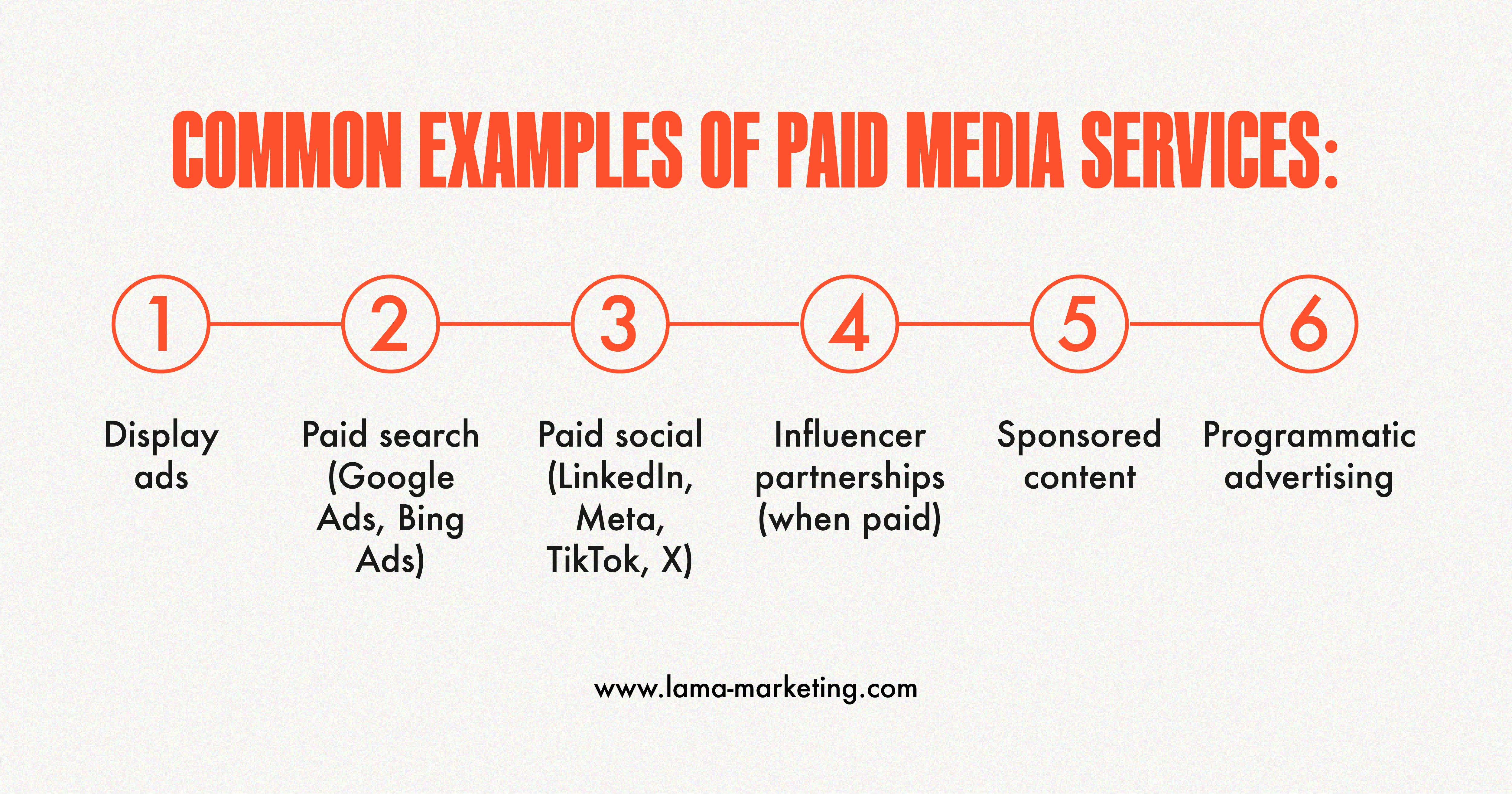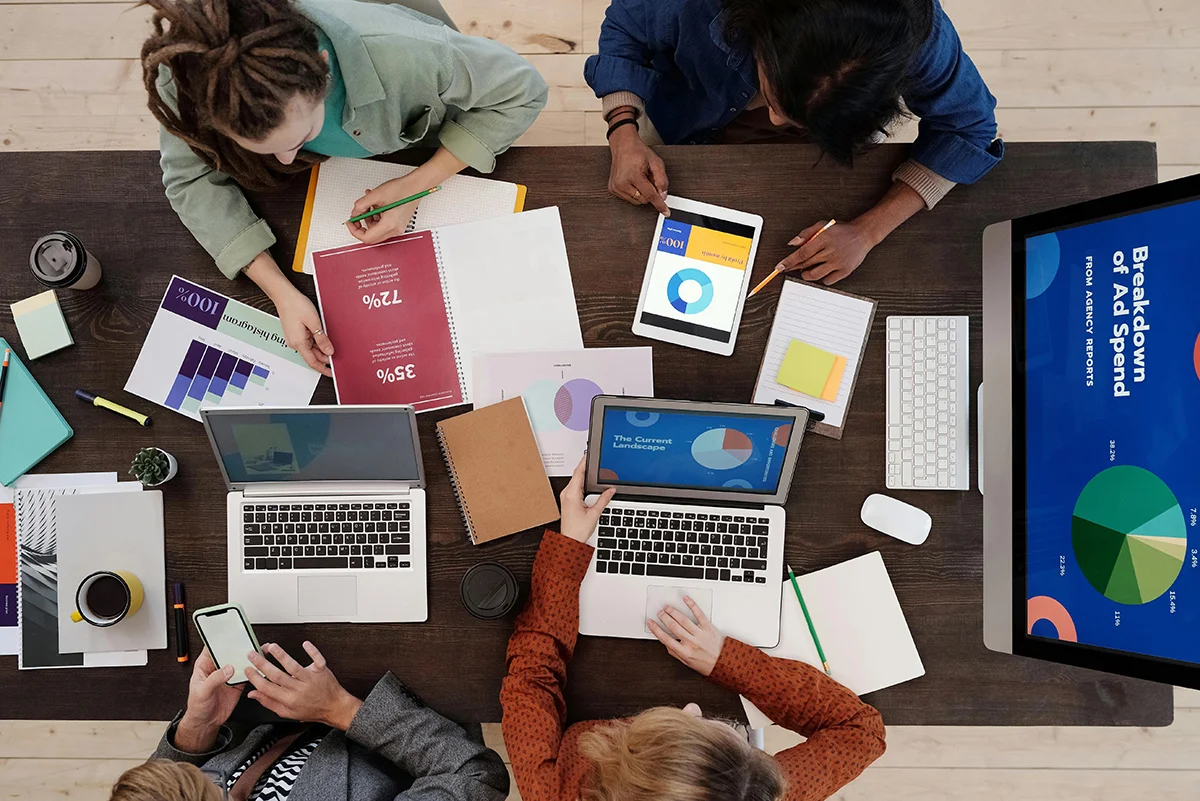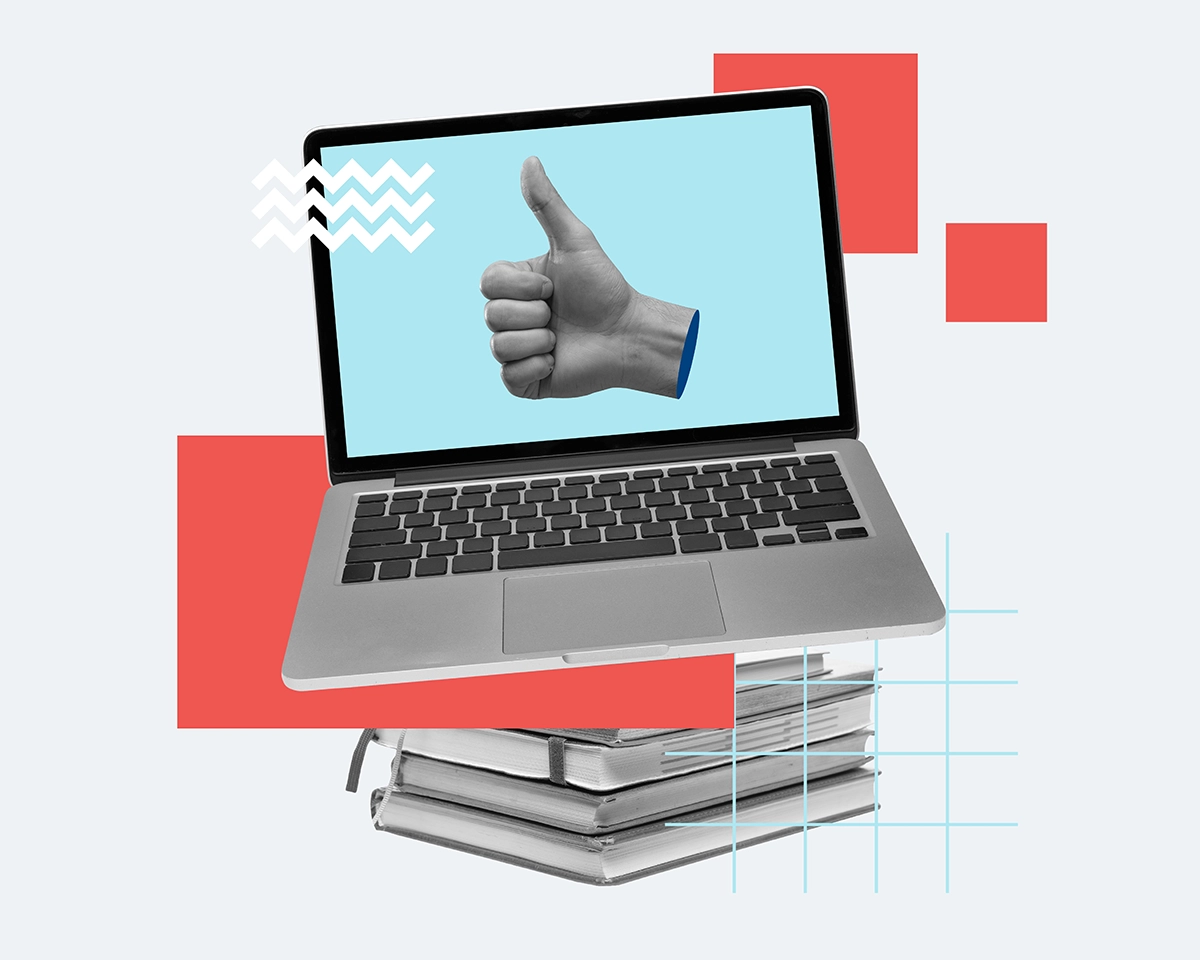Ever wonder how brands seem to show up everywhere online, just when you're searching, scrolling, or shopping? That’s not a coincidence. That’s paid media doing its thing.
Paid media is any form of digital advertising or promotion where brands pay to reach specific audiences. This includes everything from search engine ads and sponsored social media posts to display banners and influencer partnerships.
Paid media plays a big role in marketing strategies. It helps build brand awareness, drive website traffic, generate leads, and ultimately convert customers. But it doesn’t work in isolation. Paid efforts function best when paired with owned media (your website, blog, email list) and earned media (customer reviews, media coverage, organic shares). Together, they form a complete marketing ecosystem.
In this blog, we’ll give you insight into what paid media services actually include, how they’re used in modern marketing, and when it makes sense to invest in them. Whether you’re just getting started or looking to sharpen your ad strategy, this guide will help clear the fog.
What are Paid Media Services?
Let’s dig a bit deeper into what paid media services really include and why they matter.
Paid media refers to a wide range of promotional efforts where a brand pays to place content in front of a targeted audience. These aren’t just random ads. They’re part of a strategic approach to drive traffic, build awareness, and generate conversions. In fact, pay-per-click (PPC) advertising delivers an average return of $2 for every $1 spent, making it a tactic with a 200% ROI. Among the top performers? Facebook Ads and Google Ads consistently rank as channels with the highest reported returns.

When we talk about services, that includes both in-house teams and marketing agencies that manage and optimize these campaigns, handling everything from ad creation and targeting to reporting and budget allocation.
Types of Paid Media Services
Paid media isn’t a one-size-fits-all strategy. And it is also not a set-it-and-forget-it strategy, either. It includes a variety of ad formats and placements, each designed to meet specific goals, whether it’s driving traffic, generating leads, or increasing brand visibility. Below are the most common types of paid media services used in modern marketing.
- Paid Search Advertising (SEM)
Paid search, or search engine marketing (SEM), helps businesses appear at the top of search engine results when people are actively looking for relevant products or services. It uses a pay-per-click (PPC) model, where advertisers bid on keywords. You only pay when a user actually clicks your ad.
- Platforms: Google Ads and Microsoft Ads are the main players.
- Typical goals: Lead generation, conversions, and brand visibility—especially for customers already showing interest through their search terms.
- Social Media Advertising
Social media ads are highly visual and built for precision targeting. Platforms like Facebook, Instagram, LinkedIn, and TikTok let you segment audiences based on location, interests, behaviors, job titles, and more. You can even retarget people who have previously interacted with your site or profile.
This channel works well for both brand awareness and conversion goals, using a mix of image, video, carousel, and story formats to capture attention.
- Programmatic Display Advertising
Programmatic advertising uses automated technology to buy ad space in real time across websites, apps, and online publications. You set targeting parameters, and the system bids for the best placements, usually within milliseconds.
- Examples: Google Display Network, The Trade Desk.
- Benefits: Programmatic is known for its scale and efficiency, making it a good choice for campaigns focused on reach and awareness.
- Sponsored Content / Native Ads
Sponsored content, or native advertising, is designed to blend into the platform on which it appears. These ads match the look and feel of editorial content, offering a less intrusive experience for the reader or viewer.
You’ll find native ads on news websites, blogs, and platforms like YouTube, where they’re labeled as “sponsored” but often feel like part of the user experience. These are great for storytelling, thought leadership, or soft-selling a product or service.
- Influencer Marketing as Paid Media
Influencer marketing falls under paid media when a brand pays a creator to promote a product or service. These campaigns often involve contracts, creative briefs, and performance tracking.
Unlike organic mentions, paid influencer content is structured, measured, and often distributed through tools like Aspire, CreatorIQ, or Upfluence. When done right, this form of paid media can drive engagement and trust, especially when the influencer’s audience aligns with your target market.

What’s Typically Included in Paid Media Services (Agency or Freelancer)
As digital marketing continues to evolve, so do the strategies that deliver results. According to 2024 data from HubSpot, the top marketing channels driving ROI for B2B brands were their website, blog, and SEO efforts, followed closely by paid social media content and social media shopping tools. That tells us something important: paid media is no longer an optional add-on. It’s a major revenue driver for modern businesses.
So, what exactly does it look like when you hire an agency or freelancer to manage your paid media? While services can vary, most providers offer a comprehensive package that goes beyond just launching ads. Here’s what’s typically included:
- Strategic planning and campaign setup: Goal-setting, audience analysis, and platform selection based on your business objectives.
- Creative development or ad asset creation: Designing graphics, writing ad copy, and producing videos or animations as needed.
- Targeting strategy: Building custom audiences and lookalike profiles using platform data and analytics.
- A/B testing and conversion optimization: Testing headlines, visuals, and CTAs to improve click-through and conversion rates.
- Budget allocation and bid management: Monitoring ad spend, adjusting bids, and maximizing return on investment.
- Reporting and performance tracking: Regular updates with metrics like impressions, clicks, conversions, and ROI.
- Platform certifications: Many agencies hold credentials from platforms like Google, Meta (Facebook/Instagram), LinkedIn, and more, adding credibility to their expertise.
These services help businesses focus on strategy and results, rather than spending time in the weeds of daily ad management.
Benefits of Using Paid Media Services
Though there are many benefits when it comes to applying paid media to your business, the biggest one, of course, is immediate visibility. Whether you’re launching a new product or trying to get in front of a specific audience fast, paid media allows your brand to appear right where people are already spending their time, online. And in a world where immediate gratification is not just expected but entirely possible, that kind of exposure is hard to ignore.
But quick visibility is just the beginning. Here are more reasons why businesses continue to invest in paid media services:
- Advanced targeting: Reach your ideal audience based on demographics, interests, behaviors, location, and even past interactions through retargeting.
- Scalable campaigns with measurable ROI: Start with a modest budget and scale as you see results, while tracking every dollar spent and earned.
- Access to expert platforms and strategies: Agencies and paid media specialists know how to make the most of tools like Google Ads, Meta Ads Manager, and programmatic platforms.
- Complements organic and owned channels: Paid media supports your SEO, content, and email efforts by filling in gaps and guiding prospects through a full-funnel journey.
Paid Media vs Owned vs Earned Media
Earlier, we touched on the difference between paid, owned, and earned media, but let’s take a closer look at how these three categories work individually and together. Each plays a unique role in shaping your marketing strategy, and the most successful campaigns combine all three for stronger, more sustainable results.
Here’s a quick breakdown of how they compare:

Think of these three as pieces of a larger puzzle. Each one plays a different role, but together they create a complete picture of your brand. By balancing paid, owned, and earned media, you can guide potential customers from first impression to long-term loyalty.
- Paid media gets your message in front of the right people quickly.
- Owned media gives your audience a place to go for deeper engagement.
- Earned media builds trust and amplifies your brand through third-party validation.
When used together, these channels support each other: paid ads can drive traffic to your owned platforms, and satisfied customers can turn that into earned media through positive reviews or shares. A well-rounded marketing strategy pulls from all three to reach audiences at every stage of their journey.
How to Choose a Paid Media Service Provider
We’ll be honest with you. Can you manage paid media on your own? Yes, of course. But, do you really want to? Our honest answer: not necessarily.
Running a successful paid media campaign takes more than clicking “boost post” or setting a daily budget. It involves strategy, targeting, testing, optimization, and continuous tracking. That’s where outside help comes in. Hiring an expert, whether it’s an agency, freelancer, or in-house team, can help you avoid costly mistakes and actually get more out of your budget.
Here’s a quick breakdown of your options:
- In-house team: Great for long-term control and brand consistency, but requires salary investment and ongoing training.
- Freelancer: Often more affordable and flexible, but may lack capacity for larger campaigns.
- Agency: Offers a team of specialists, access to advanced tools, and a wide range of services in one place.
Before choosing a provider, ask these questions:
- Are they certified in relevant platforms? (Google Ads, Meta, LinkedIn, etc.)
- Do they provide transparent reporting? Will you see what’s working—and what isn’t?
- What industries do they specialize in? Do they understand your niche?
- What’s included in their service package? Make sure you know exactly what you're getting before you sign.
Is Paid Media the Missing Piece in Your Marketing Strategy?
Paid media services offer strategic, targeted ways to grow brand awareness, reach the right audiences, and drive measurable results. Whether you're scaling a campaign or just getting into digital marketing, the right paid media plan can elevate your visibility and support your larger marketing goals.
If your current digital mix feels unbalanced or underperforming, it may be time to explore outsourcing. From search ads to non-traditional forms of paid social media marketing, outside experts can help you make smarter decisions and avoid wasted spend.
Looking to explore paid media for your brand? Contact the team at LAMA to learn how we can help.



.webp)











